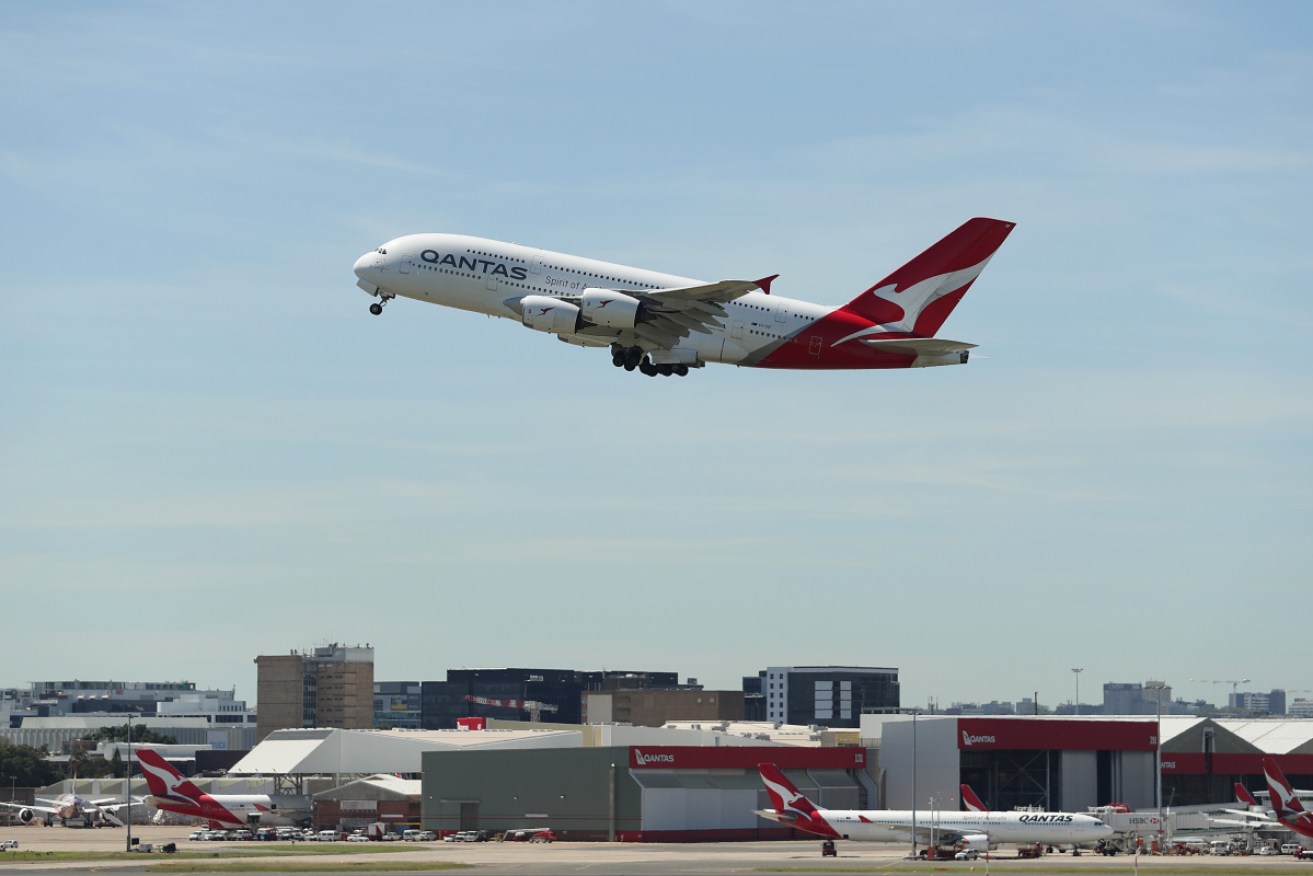Emissions-busting aviation yet to take off

The Qantas Boeing 737 aircraft safely touched back down after turning around soon after leaving. Photo: AAP
Aviation will be one of the most difficult sectors to cut emissions unless governments support new technology, experts warn.
Qantas was one of the first airlines to commit to net zero emissions by 2050, and capping net emissions at 2019 levels.
Now 31 of 60 major passenger airlines have made the 2050 net zero pledge.
But global emissions in the aviation sector are still expected to nearly double by 2050.
“Achieving net zero still means confronting a big innovation gap,” aviation expert Takehiro Kawahara told a BloombergNEF energy summit on Wednesday.
Government commitments are still lacking, largely because international flights falls outside the way national emissions are counted.
Australia did not sign up to last year’s new International Aviation Climate Ambition Coalition by 23 countries, including the United States and United Kingdom, to reduce aviation emissions.
But nor did China, India, Russia and Brazil – together the source of almost one-fifth of aviation emissions.
The global aviation sector accounted for 3.2 per cent of global carbon emissions the year before COVID-19 took hold, after almost doubling since 2000.
This share of the world’s pollution is expected to rise as air travel demand is likely to grow strongly after the pandemic.
Aviation needs increased investment in low-carbon fuels and zero-emission aircraft technology to drive actual emissions reductions as the industry is still heavily reliant on carbon offsets.
Fleet modernisation and more efficient ground operations could also be part of cleaning up the sector, Mr Kawahara said.
More fuel-efficient narrow-body aircraft are being ordered from Airbus, Boeing, China’s Comac and in Russia.
The world’s first electric aircraft, developed by Israeli company Eviation, is being tested in the United States. The nine-passenger “Alice” can fly for one hour and has a maximum speed half that of a Boeing 737.
Feasibility studies for hydrogen fuel are also underway at a handful of airlines.
The International Air Transport Association (IATA) has drawn up a decarbonisation flight plan that brings air transport in line with the objectives of the Paris agreement to limit global warming to 1.5 degrees.
But experts warn significant government support is needed to get it off the ground, along with collaboration with airlines, airports, air navigation and manufacturers.
To serve the needs of the ten billion people expected to fly in 2050, it is estimated at least 1.8 gigatons of carbon must be abated in that year.
– AAP








